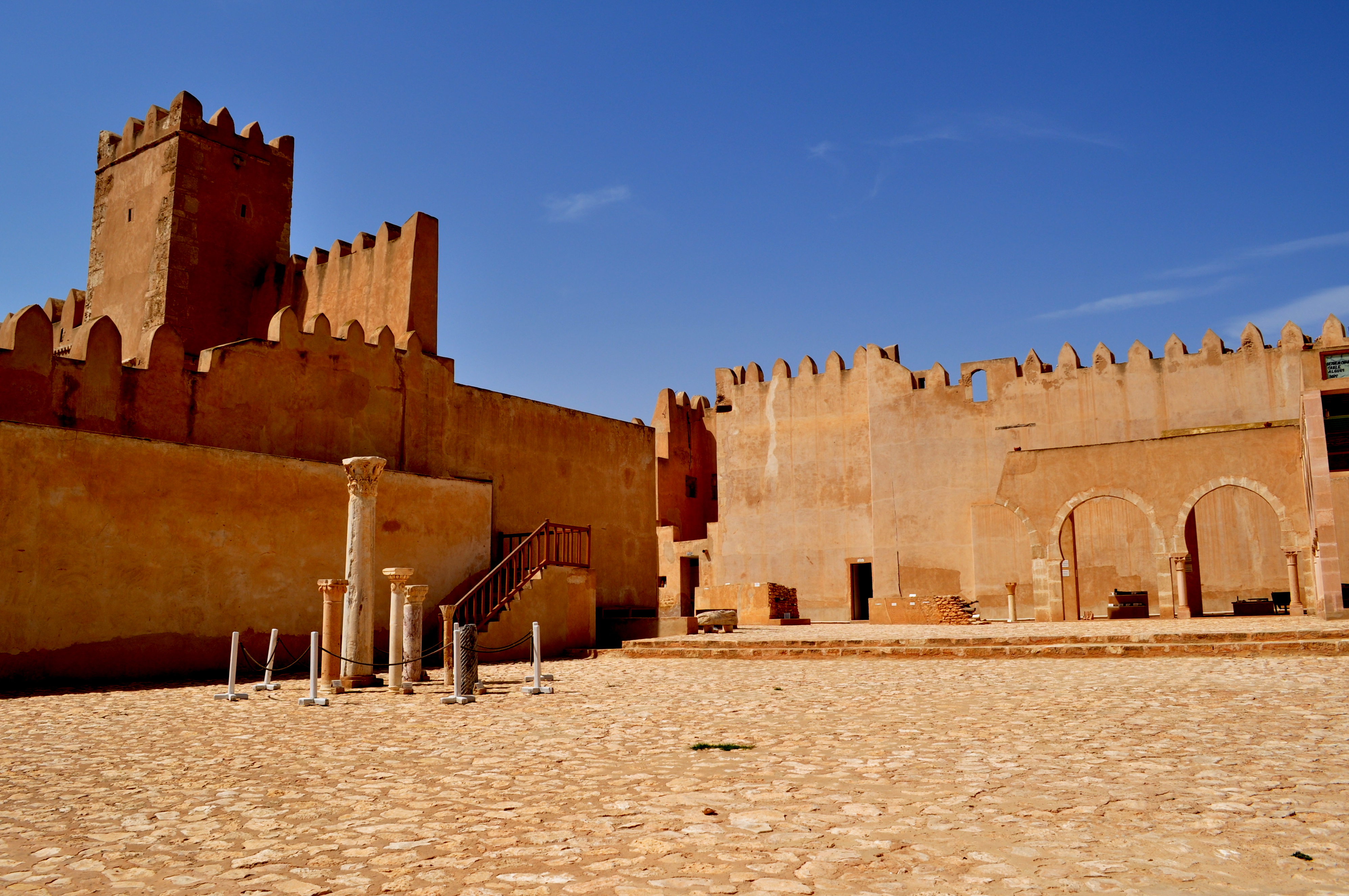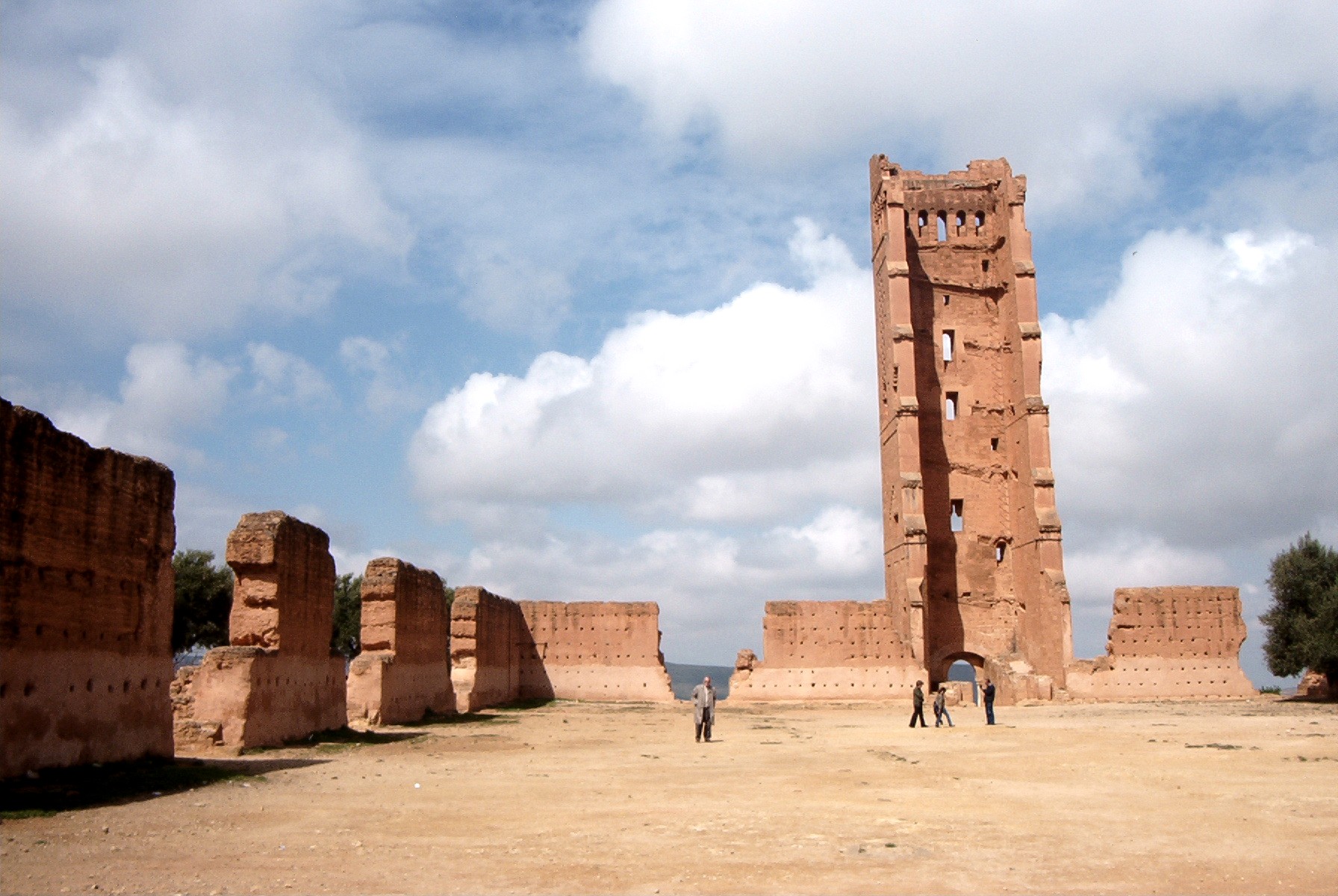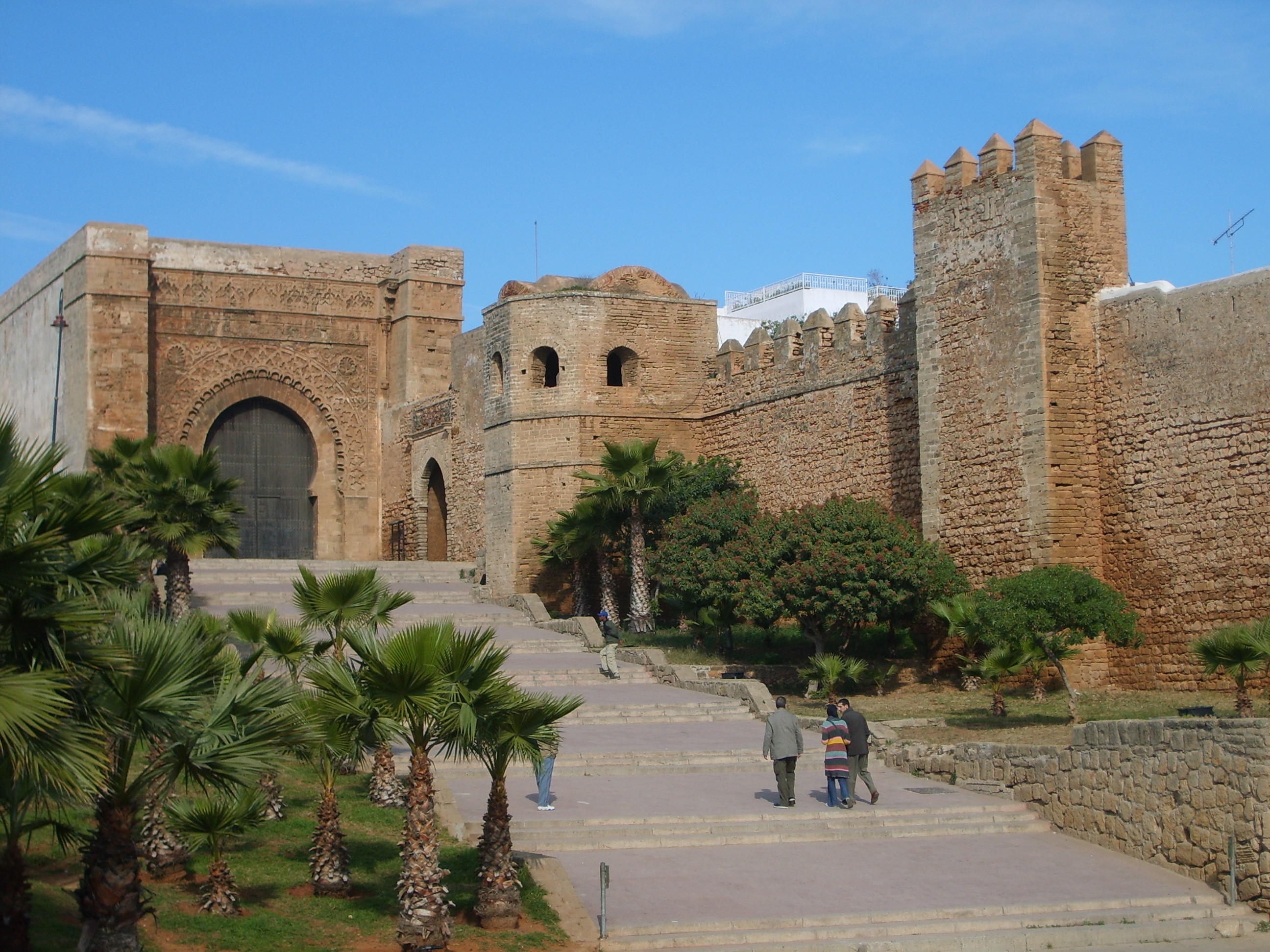|
Kasbah Of The Udayas
The Kasbah of the Udayas (; ), also spelled Kasbah of the Oudaias or of the Oudayas, is a kasbah (citadel) in Rabat, Morocco. It is located on a hill at the mouth of the Bou Regreg opposite Salé, and adjacent to the Medina quarter of Rabat. It is listed, along with other sites in Rabat, as a UNESCO World Heritage Site. Name The kasbah takes its name from the Udaya tribe. This name only became associated with the kasbah in the 19th century after the tribe was permanently expelled from Fez. A fraction of the tribe settled in the then previously almost uninhabited kasbah. The use of ''al-Widaya'' () instead of ''al''-''Awdāya'' has become popular in Morocco. History In the 10th century the Umayyads of Cordoba, or their Zenata Berber allies in the region, founded a ribat or fortified monastery/outpost in this area, to defend against the Barghawata Berbers, who had established a Kharijite state to the south. This ribat was most likely on the same site as the current Kasbah ... [...More Info...] [...Related Items...] OR: [Wikipedia] [Google] [Baidu] |
Kasbah
A kasbah (, also ; , , Maghrebi Arabic: ), also spelled qasbah, qasba, qasaba, or casbah, is a fortress, most commonly the citadel or fortified quarter of a city. It is also equivalent to the term in Spanish (), which is derived from the same Arabic word. By extension, the term can also refer to a medina quarter, particularly in Algeria. In various languages, the Arabic word, or local words borrowed from the Arabic word, can also refer to a settlement, a fort, a watchtower, or a blockhouse. Citadel or fortress The term ''qasaba'' was historically flexible but it essentially denotes a fortress, commonly a citadel that protects a city or settlement area, or that serves as the administrative center. A kasbah citadel typically housed the military garrison and other privileged buildings such as a palace, along with other amenities such as a mosque and a hammam (bathhouse). Some kasbahs are built in a strategic elevated position overlooking the city, like the Kasbah of the O ... [...More Info...] [...Related Items...] OR: [Wikipedia] [Google] [Baidu] |
Barghawata
The Barghawatas (or Barghwata, Berghouata) were a Berbers, Berber tribal confederation and religious movement that ruled a region of the Atlantic Ocean, Atlantic coast in present-day Morocco between the 8th and 11th centuries. They belonged to the Masmuda confederacy. After allying with the Sufri Berber Revolt, rebellion against the Umayyad Caliphate, they established an independent state (AD744-1058) in the area of Tamasna, Tamesna on the Atlantic coast between Safi, Morocco, Safi and Salé under the leadership of Tarif al-Matghari. Etymology Some historians believe that the term ''Barghawata'' is a phonetic deformation of the term ''Barbati'', a nickname which Tarif carried. It is thought that he was born in the area of Barbate, near Cádiz in Spain. However, Jérôme Carcopino and other historians think the name is much older and the tribe is the same as that which the Ancient Rome, Romans called ''Baquates'', who up until the 7th century lived near Volubilis. History Few deta ... [...More Info...] [...Related Items...] OR: [Wikipedia] [Google] [Baidu] |
Philip III Of Spain
Philip III (; 14 April 1578 – 31 March 1621) was King of Spain and King of Portugal, Portugal (where he is known as Philip II of Portugal) during the Iberian Union. His reign lasted from 1598 until his death in 1621. He held dominion over the Spanish Netherlands, Naples, Sicily, Sardinia, and the Duchy of Milan during the same period. A member of the House of Habsburg, Philip III was born in Madrid to King Philip II of Spain and his fourth wife, Anna of Austria (1549–1580), Anna of Austria. The family was heavily Inbreeding, inbred; Philip II and Anna were related both as uncle and niece, as well as cousins. Philip III married his cousin Margaret of Austria, Queen of Spain, Margaret of Austria, the sister of Ferdinand II, Holy Roman Emperor. Although known in Spain as Philip the Pious, his political reputation internationally has generally been negative. Historians C. V. Wedgwood, R. Stradling and J. H. Elliott have described him, respectively, as an "undistinguished and insi ... [...More Info...] [...Related Items...] OR: [Wikipedia] [Google] [Baidu] |
Marinid Sultanate
The Marinid dynasty ( ) was a Berbers, Berber Muslim dynasty that controlled present-day Morocco from the mid-13th to the 15th century and intermittently controlled other parts of North Africa (Algeria and Tunisia) and of the southern Iberian Peninsula (Spain) around Gibraltar. It was named after the Banu Marin (, Berber languages, Berber: ''Ayt Mrin''), a Zenata, Zenata Berber tribe. It ruled the Marinid sultanate, founded by Abd al-Haqq I.C.E. Bosworth, ''The New Islamic Dynasties'', (Columbia University Press, 1996), 41-42. In 1244, after being at their service for several years, the Marinids overthrew the Almohad Caliphate, Almohads which had controlled Morocco. At the height of their power in the mid-14th century, during the reigns of Abu al-Hasan Ali ibn Othman, Abu al-Hasan and his son Abu Inan Faris, Abu Inan, the Marinid dynasty briefly held sway over most of the Maghreb including large parts of modern-day Algeria and Tunisia. The Marinids supported the Emirate of Grana ... [...More Info...] [...Related Items...] OR: [Wikipedia] [Google] [Baidu] |
Bab Er-Rouah
Bab er-Rouah (; also spelled Bab er-Ruwah or Bab Rouah) is a monumental gate in the Almohad-era ramparts of Rabat, Morocco. History It was built by the Almohad caliph Ya'qub al-Mansur in the late 12th century, as part of the monumental capital he started building here. The gate and its adjoining ramparts were finished by 1197. The Arabic name ''Bab ar-Ruwah'', meaning "Gate of the Winds", likely derives from the strong Atlantic winds which batter the city. The entrance archway of the gate today is smaller than it was originally because it has been partly filled-in with smaller stones. This reduction dates from the time of the Alaouite sultan Sidi Muhammad ibn Abdallah (second half of 18th century), who made similar adjustments to the Bab Agnaou gate in Marrakesh. Today the gate's interior has been converted into an art gallery. It was recently renovated in 2000–2001. Architecture The gate is notable for its defensive structure as well as for its rich stone-carved dec ... [...More Info...] [...Related Items...] OR: [Wikipedia] [Google] [Baidu] |
Hassan Tower
Hassan Tower or Tour Hassan (; is the minaret of an incomplete mosque in Rabat, Morocco. It was commissioned by Abu Yusuf Yaqub al-Mansur, the third caliph of the Almohad Caliphate, near the end of the 12th century. The tower was intended to be the largest minaret in the world, and the mosque, if completed, would have been the largest in the western Muslim world. When al-Mansur died in 1199, construction on the mosque stopped. The minaret was left standing at a height of 44 meters. The rest of the mosque was also left incomplete, with only the beginnings of several walls and 348 columns being constructed. The tower, along with the remains of the mosque and the modern Mausoleum of Mohammed V, forms an important historical and tourist complex in Rabat. Name Although the tower and the mosque were commissioned by Abu Yusuf Yaqub al-Mansur, the monument is known as the "Hassan" Tower or the al-Hassan Mosque. It is called Hassan Tower, because the settlementin which it was built was ... [...More Info...] [...Related Items...] OR: [Wikipedia] [Google] [Baidu] |
Yaqub Al-Mansur
Abū Yūsuf Yaʿqūb ibn Yūsuf ibn Abd al-Muʾmin al-Manṣūr (; d. 23 January 1199), commonly known as Yaqub al-Mansur () or Moulay Yacoub (), was the third Almohad caliph. Succeeding his father, al-Mansur reigned from 1184 to 1199. His reign was distinguished by the flourishing of trade, architecture, philosophy and the sciences, as well as by victorious military campaigns in which he was successful in repelling the tide of the ''Reconquista'' in the Iberian Peninsula. Military actions Al-Mansur's father was killed in Portugal on 29 July 1184; upon reaching Seville with his father's body on 10 August, he was immediately proclaimed the new caliph. Al-Mansur vowed revenge for his father's death, but fighting with the Banu Ghaniya delayed him in Africa. After inflicting a new defeat on the Banu Ghaniya, he set off for the Iberian Peninsula to avenge his father's death. His 13 July 1190 siege of Tomar, center of the Portuguese Templars, failed to capture the fortress. However ... [...More Info...] [...Related Items...] OR: [Wikipedia] [Google] [Baidu] |
Abd Al-Mu'min
Abd al-Mu'min (c. 1094–1163) (; full name: ʿAbd al-Muʾmin ibn ʿAlī ibn ʿAlwī ibn Yaʿlā al-Kūmī Abū Muḥammad) was a prominent member of the Almohad movement. Although the Almohad movement itself was founded by Ibn Tumart, Abd al-Mu'min was the founder of the ruling dynasty and creator of the Almohad empire. As a leader of the Almohad movement he became the first Caliph of the Almohad Empire in 1133, after the death in 1130 of the movement's founder, Ibn Tumart, and ruled until his death in 1163. Abd al-Mu'min put his predecessor's doctrine of Almohadism into practice, defeated the Almoravids, and extended his rule across Al-Andalus (on the Iberian Peninsula) and as far as Tunis in Ifriqiya (present-day Tunisia), thus bringing the Maghreb in North Africa and Al-Andalus in Europe under one creed and one government. Early life Abd al-Mu'min was born in the village of Tagra, near Tlemcen, in the Kingdom of the Hammadids, present-day Algeria, into the Kumiya tribe ... [...More Info...] [...Related Items...] OR: [Wikipedia] [Google] [Baidu] |
Caliphate
A caliphate ( ) is an institution or public office under the leadership of an Islamic steward with Khalifa, the title of caliph (; , ), a person considered a political–religious successor to the Islamic prophet Muhammad and a leader of the entire Muslim world (''ummah''). Historically, the caliphates were polities based on Islam which developed into multi-ethnic trans-national empires. During the medieval period, three major caliphates succeeded each other: the Rashidun Caliphate (632–661), the Umayyad Caliphate (661–750), and the Abbasid Caliphate (750–1517). In the fourth major caliphate, the Ottoman Caliphate, the rulers of the Ottoman Empire claimed caliphal authority from 1517 until the Ottoman caliphate was Abolition of the Caliphate, formally abolished as part of the Atatürk's reforms, 1924 secularisation of Turkey. An attempt to preserve the title was tried, with the Sharifian Caliphate, but this caliphate fell quickly after its conquest by the Sultanate o ... [...More Info...] [...Related Items...] OR: [Wikipedia] [Google] [Baidu] |
Edinburgh University Press
Edinburgh University Press is a scholarly publisher of academic books and journals, based in Edinburgh, Scotland. History Edinburgh University Press was founded in the 1940s and became a wholly owned subsidiary of the University of Edinburgh in 1992. Books and journals published by the press carry the imprimatur of The University of Edinburgh. All proposed publishing projects are appraised and approved by the Press Committee, which consists of academics from the university. Since August 2004, the Press has had Charitable Status. In November 2013, Edinburgh University Press acquired Dundee University Press for an undisclosed sum, with a stated aim to increase textbook and digital sales, with a particular focus on law. Brodies advised Edinburgh University Press on the terms of the acquisition. Publishing Edinburgh University Press publishes a range of research publications, which include scholarly monographs and reference works, as well as materials which are available on-lin ... [...More Info...] [...Related Items...] OR: [Wikipedia] [Google] [Baidu] |
Almohad Caliphate
The Almohad Caliphate (; or or from ) or Almohad Empire was a North African Berbers, Berber Muslim empire founded in the 12th century. At its height, it controlled much of the Iberian Peninsula (Al-Andalus) and North Africa (the Maghreb). The Almohad movement was founded by Ibn Tumart among the Berber Masmuda tribes, but the Almohad caliphate and its ruling dynasty, known as the Mu'minid dynasty, were founded after his death by Abd al-Mu'min. * Around 1121, Ibn Tumart was recognized by his followers as the Mahdi, and shortly afterwards he established his base at Tinmel in the Atlas Mountains. Under Abd al-Mu'min (r. 1130–1163), they succeeded in overthrowing the ruling Almoravid dynasty governing the western Maghreb in 1147, when he conquered Marrakesh and declared himself caliph. They then extended their power over all of the Maghreb by 1159. Al-Andalus followed, and all of Muslim Iberia was under Almohad rule by 1172. The turning point of their presence in the Iberian Pe ... [...More Info...] [...Related Items...] OR: [Wikipedia] [Google] [Baidu] |






